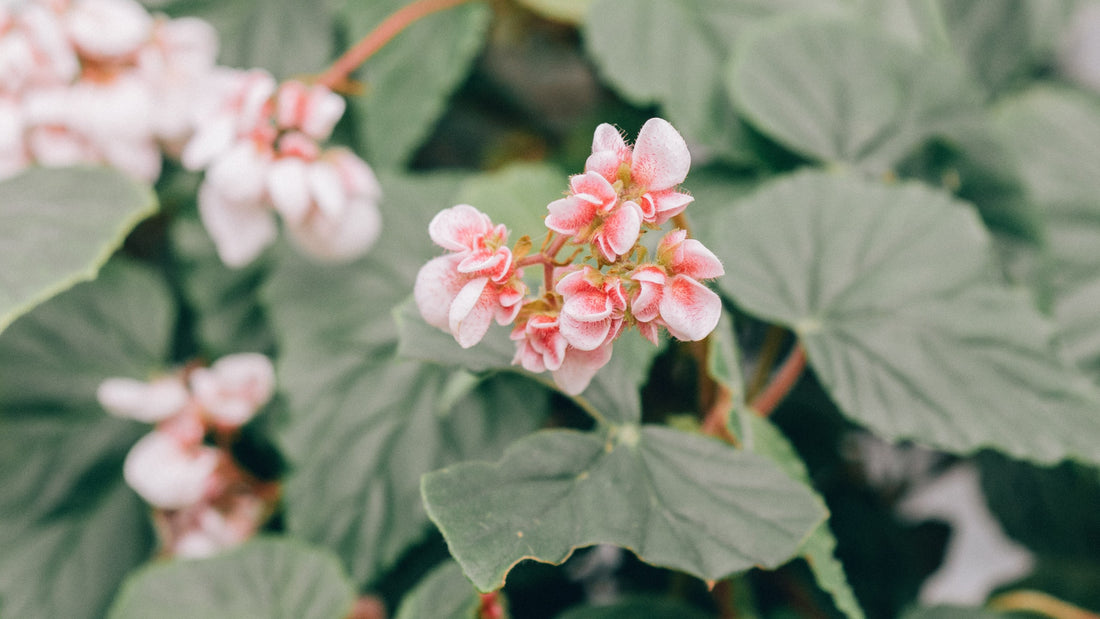Begonia Houseplant: Selecting the Perfect Variety for Your Indoor Garden
Introduction
Begonia houseplants have become increasingly popular among plant enthusiasts, and it's easy to see why. With their stunning foliage, vibrant blooms, and incredible diversity, begonias are a fantastic addition to any indoor garden. However, with so many varieties to choose from, selecting the perfect begonia for your home can be a daunting task. That's where we come in! In this article, we'll help you navigate the world of begonias and guide you in selecting the perfect variety for your indoor garden. So, let's dive into the colorful world of begonia houseplants!
Understanding Different Types of Begonias
Begonias can be broadly categorized into three main types: fibrous-rooted, rhizomatous, and tuberous. Each type offers unique characteristics, making them suitable for different indoor environments and personal preferences.
Fibrous-Rooted Begonias
Fibrous-rooted begonias, as their name suggests, have a dense network of roots that spread out from the base of the plant. These plants are typically compact, making them ideal for smaller spaces. Wax begonias are a popular example of fibrous-rooted begonias and are known for their glossy leaves and continuous flowering.
Rhizomatous Begonias
Rhizomatous begonias have thick, fleshy stems that grow horizontally along the soil surface. They are prized for their stunning foliage, with leaves that come in various shapes, sizes, and patterns. Angel wing begonias, named for their uniquely shaped leaves, and Rex begonias, known for their colorful, textured foliage, are both examples of rhizomatous begonias.
Tuberous Begonias
Tuberous begonias develop from an underground storage organ called a tuber. These plants are famous for their large, showy flowers that come in a wide range of colors. Rieger begonias are a popular hybrid variety of tuberous begonia that thrive indoors.
Factors to Consider When Choosing a Begonia Houseplant
When selecting the perfect begonia for your indoor garden, it's essential to consider the following factors:
Your Home's Environment
Different begonia varieties have unique light, humidity, and temperature preferences. For instance, Rex begonias prefer indirect light and high humidity, while wax begonias can tolerate brighter light and more moderate humidity levels. Assess the conditions in your home and choose a begonia variety that will thrive in your environment.
Plant Size and Growth Habit
Consider the space available in your home and how large you'd like your begonia to grow. Some varieties, like wax begonias, remain compact, while others, like angel wing begonias, can grow quite tall.
Leaf and Flower Characteristics
Begonia foliage and flowers come in an impressive array of shapes, sizes, and colors. Decide whether you're more interested in a begonia with striking foliage or one with stunning blooms – or perhaps a combination of both!
Maintenance Requirements
Some begonias require more care than others. For example, tuberous begonias often need more attention when it comes to watering and fertilizing, while fibrous-rooted varieties are generally more low-maintenance.
Compatibility with Other Houseplants
Consider the other plants in your indoor garden and whether the begonia variety you choose will complement them. It's essential to ensure that your begonia's care requirements align with those of your existing plants.
Tips for Selecting Healthy Begonia Houseplants
When choosing a begonia houseplant, keep the following tips in mind to ensure you're selecting a healthy specimen:
- Inspect the foliage for signs of pests or disease. Healthy begonias should have vibrant, blemish-free leaves.
- Check the stems for any signs of rot or damage. The stems should be firm and free of soft spots or discoloration.
- Look for a well-developed root system. Gently remove the begonia from its pot and inspect the roots, which should be white or light tan and not overly tangled.
- Choose a plant with a balanced, symmetrical growth habit. This indicates that the begonia has been receiving consistent light and care.
- Look for new growth, such as fresh leaves or flower buds. This is a sign that the plant is healthy and actively growing.
Conclusion
Selecting the perfect begonia houseplant for your indoor garden can be an exciting and rewarding experience. With so many stunning varieties to choose from, you're sure to find a begonia that will not only thrive in your home but also add beauty and interest to your indoor garden. By considering factors such as your home's environment, plant size and growth habit, leaf and flower characteristics, maintenance requirements, and compatibility with other houseplants, you'll be well on your way to selecting the ideal begonia variety for your space. And with proper care and attention, your begonia houseplant will reward you with its captivating foliage and blooms for years to come. Happy planting!












